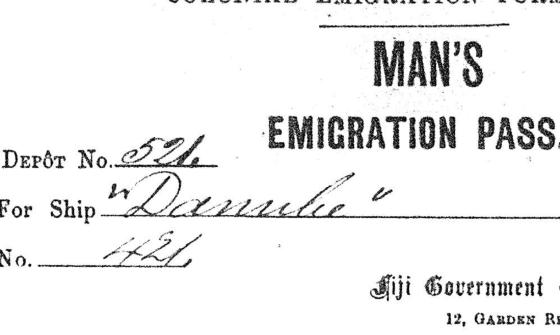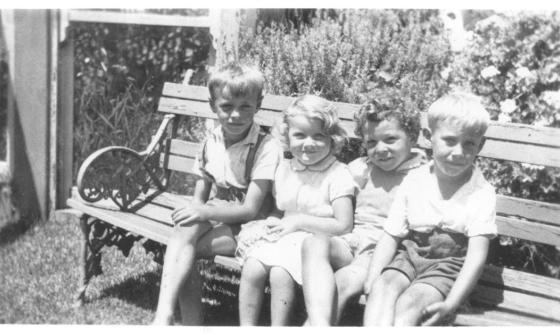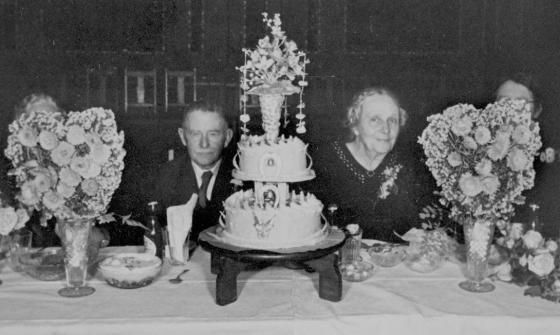Tracing your family history with the Library’s charts and forms
Researching your family history can be fascinating, intriguing and at times surprising. Uncovering the past to discover who your ancestors were, how they lived and where they were placed on the family tree can often reveal those unexpected genealogy gems. To help organise your research, the Library has developed family history charts and an individual research form that can be freely downloaded or printed. Here are tips and tricks on how to use these research tools and where to find the records as you undertake your family history journey.
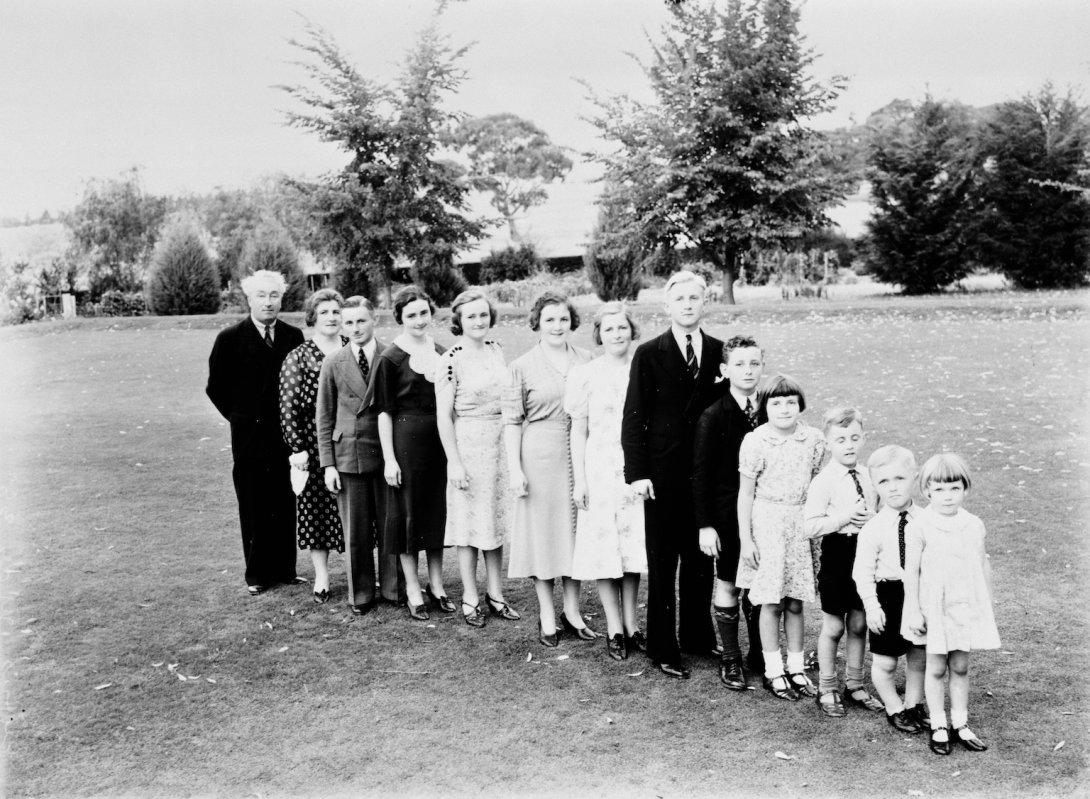
A. Collingridge, Portrait of the Lyons family, Canberra, ca. 1935 nla.obj-137397778
A. Collingridge, Portrait of the Lyons family, Canberra, ca. 1935 nla.obj-137397778
Family history tree charts
Begin your research by documenting your family tree using one of our family history tree charts.
A systematic approach, working backwards from yourself is the easiest way to trace your ancestry. It is best to work from the known to the unknown, one generation back at a time. Start by writing down your full name, date and place of birth, followed by your parents' full names, dates and places of birth and so forth.
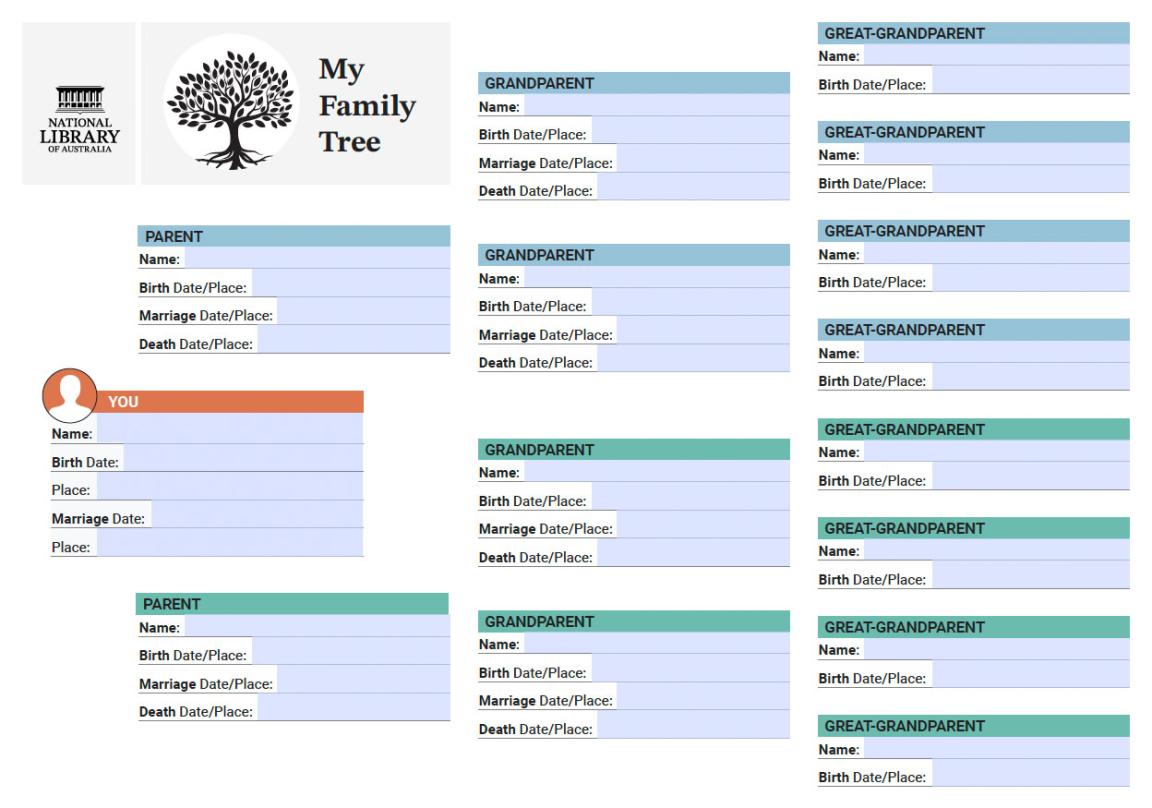
Four-generation family tree chart
Four-generation family tree chart
Individual research form
Looking over your family history tree chart, you can start working out what gaps need to be filled and where you want to dive deeper. Choose which ancestor to target and using the Library's new individual research form you can start to capture details such as marriage(s), occupation, education and, if relevant, military service, arrival in Australia and First Nations ancestry.
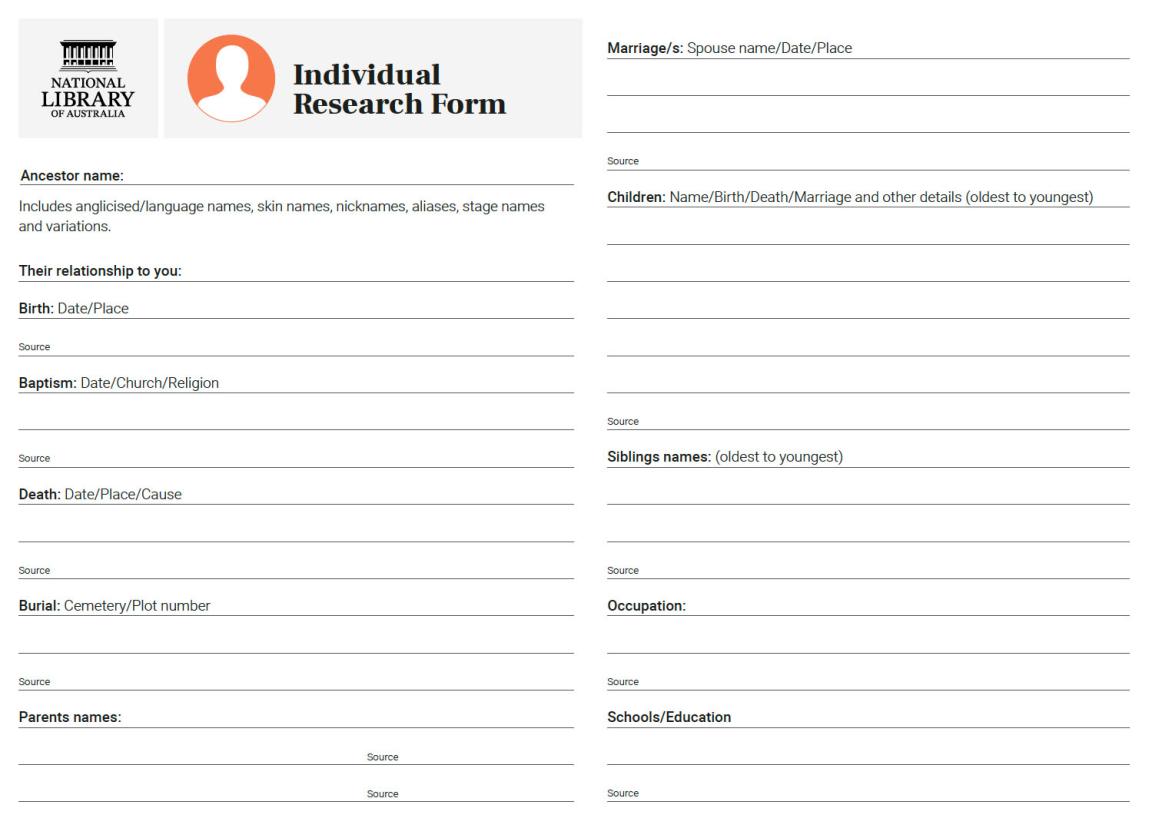
First page of the individual research chart
First page of the individual research chart
Filling in the gaps
From there, you can figure out what records need to be accessed and where those records are located. Records created at the time your ancestor was alive will be the most reliable. Let's take a look at what records you can explore at the Library.
Births, deaths and marriage records
These are the records most family historians start with. In Australia, birth, deaths and marriages are arranged by the state or territory the event was registered in. Certificates can only be purchased through the relevant state or territory registry office and can contain a wealth of information about a person. Although the Library does not hold certificates, we hold a range of indexes available to access in formats such as CD-ROM indexes, microfiche indexes, family history databases and links to freely available online indexes via state and territory registrar websites.
Visit our Australian birth, death and marriage research guide to find out more.
Church records can be another alternative to certificates. Information found in baptism, marriage and burial records will vary but generally include the name of the person, date of event, age at the time of the event, family members such as parents for baptism record, spouse for marriage record or other useful information. Once you find out which church congregation the ancestor belonged to, then you may discover other family members who attended to the same church.
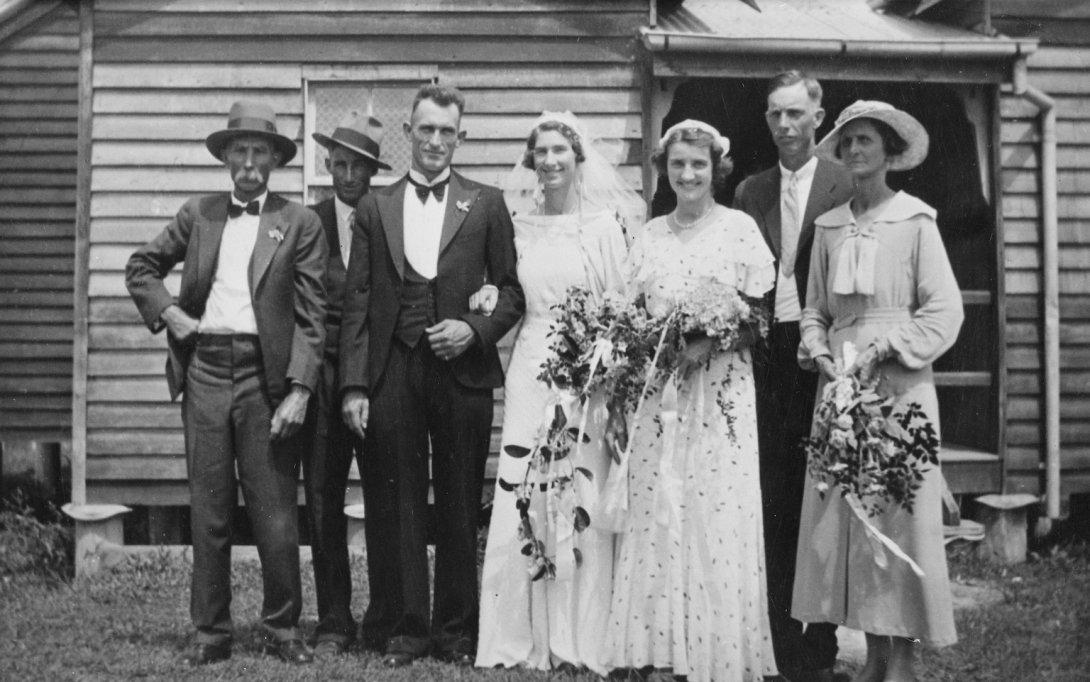
John and Lydia Duncan at their daughter Vera's wedding, ca. 1930s, nla.obj-151258569
John and Lydia Duncan at their daughter Vera's wedding, ca. 1930s, nla.obj-151258569
Occupation
Electoral rolls can be a great way to find out more about your ancestor. Family historians can find out the residential address of a person and so locate other family members living at the address for a certain year. Discovering the profession of an individual on an electoral roll can be valuable information. Knowing your ancestors' trade or occupation could explain the location of an address. They could have moved according to the type of work or could live close to their workplace or business.
View our Australian electoral rolls research guide for more details.
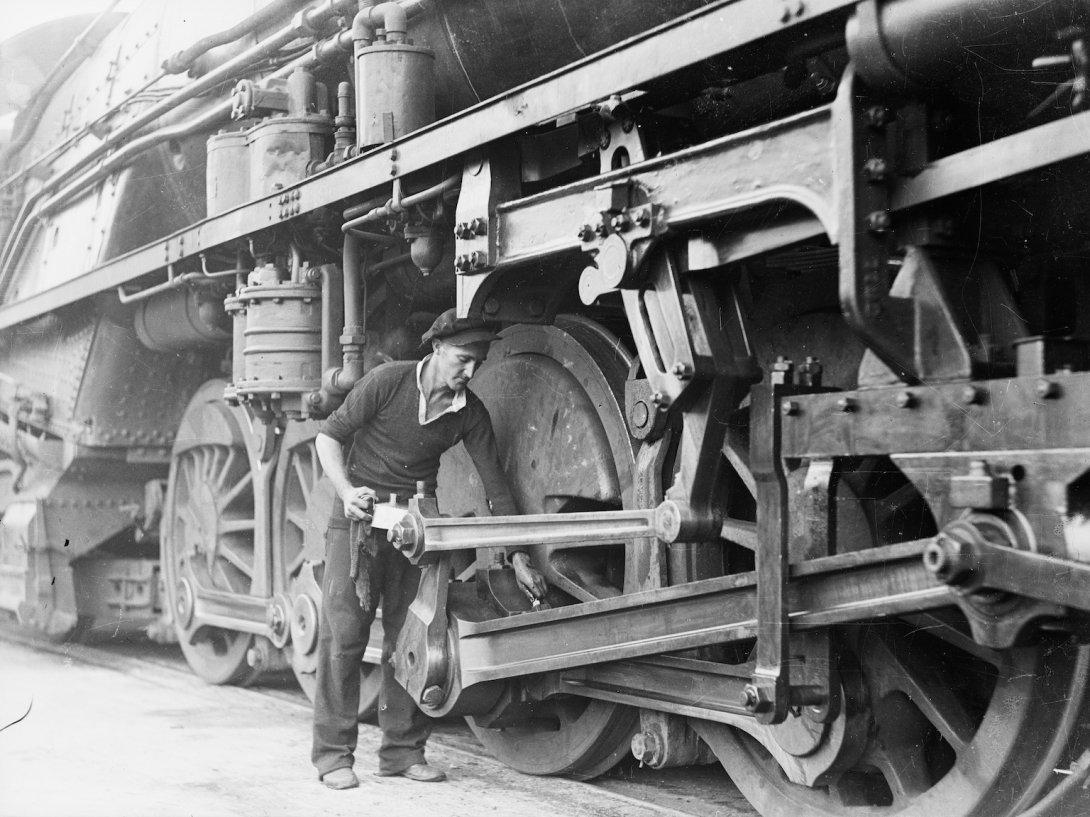
Fairfax Corporation, Railway employee oiling around the motion of the connecting rod of a D57 class goods steam locomotive, New South Wales, ca. 1930s, nla.obj-162648737
Fairfax Corporation, Railway employee oiling around the motion of the connecting rod of a D57 class goods steam locomotive, New South Wales, ca. 1930s, nla.obj-162648737
School/Education
School and education records can provide another fantastic insight into your ancestors' lives. You can discover what sort of education your ancestors received, the name of the institution they attended and if it was a public or private school or if they achieved academic or sporting success representing their school. These pieces of information can often provide an invaluable glimpse into your ancestors' lives.
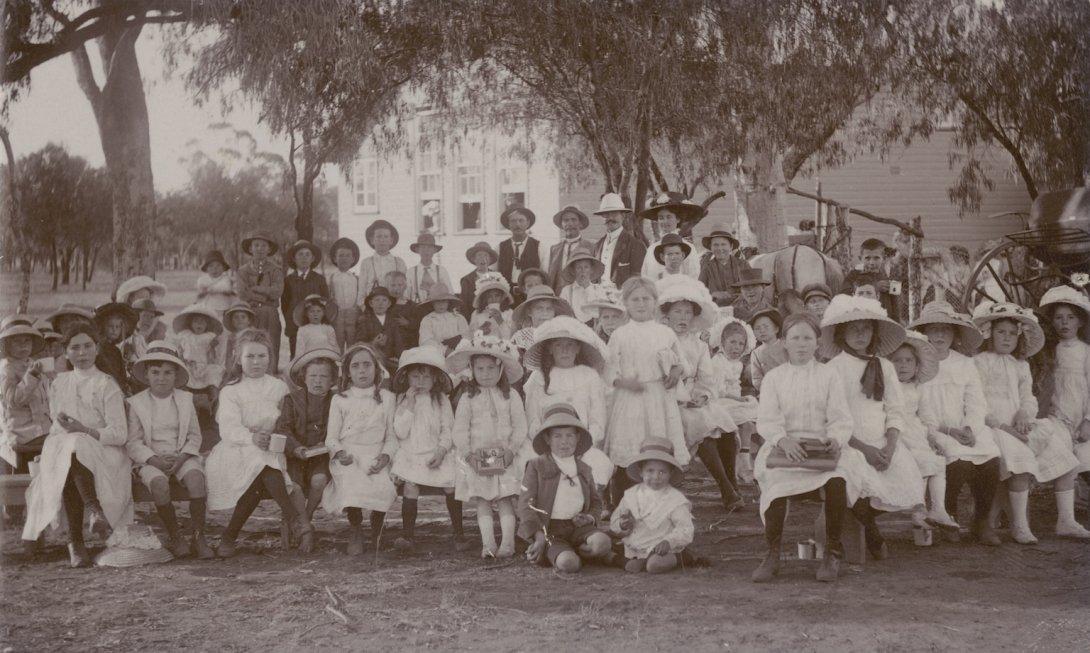
E. C. Kempe, Portrait of group of school children at Lightning Ridge school, New South Wales, ca. 1915, nla.obj-140588109
E. C. Kempe, Portrait of group of school children at Lightning Ridge school, New South Wales, ca. 1915, nla.obj-140588109
The Library can help you find this through school yearbooks, newsletters and photos, newspapers and historical public or government school records.
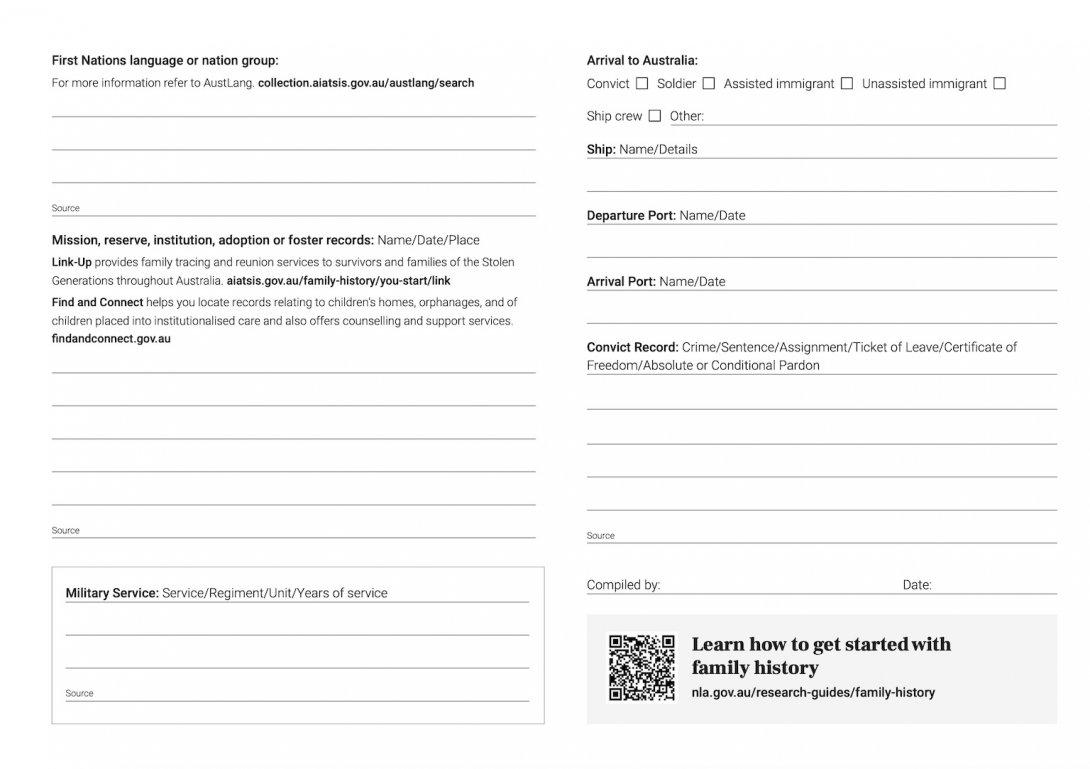
Second page of the individual research chart
Second page of the individual research chart
First Nations records
Talking to your family and reading the Library's research guide on Australian Indigenous family history are a good way to start your research. First Nations family history research can involve searching across multiple institutions and organisations and can take a lot of time. Discovering family history is often exciting, but sometimes you may find records or information that may be offensive or cause distress.
Military records
Whether your military ancestor arrived in colonial Australia as part of the British Army or served in the Australian defence force there are resources available at the Library that can assist with your research. Details of their service may be found in British Army records, personnel indices or newspapers and gazettes.
Service files not only contain information about their military role and regiment but personal details such as birth date or age at time of enlistment, residential address, next of kin or spouse and medical information. These records could provide a wealth of information for family historians!
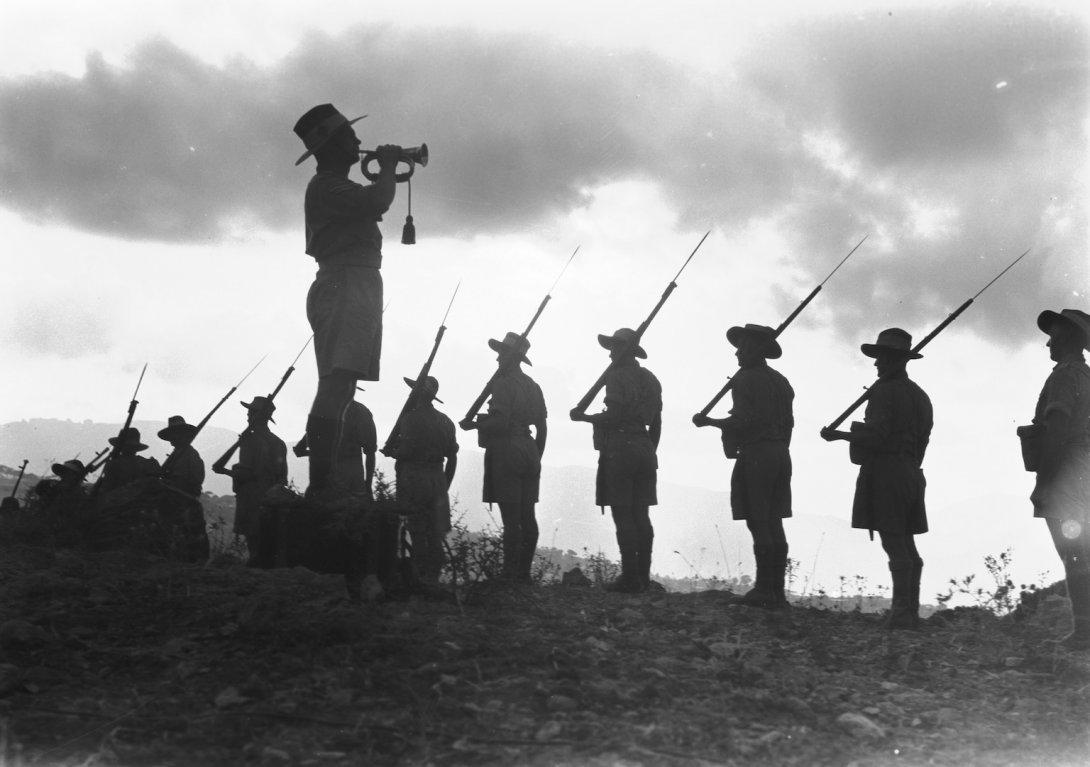
Frank Hurley, Bugler and line of soldiers, ca. 1940, nla.obj-158873723
Frank Hurley, Bugler and line of soldiers, ca. 1940, nla.obj-158873723
Shipping and passenger records
Some of our more frequent family history inquiries at the Library concern shipping passenger records. Discovering why, how and when your ancestors arrived in Australia can often provide that missing piece to the family history puzzle. Passenger records are a very useful source of information for family history research.
The information contained on a historical passenger will vary. Some records could include the passenger's full name, date of arrival, name of ship, age, occupation, country of origin and marital status of the passenger. A wealth of information for any family historian. However, some passenger records can contain very little information, for example just a surname, which can make it difficult to confirm you have the right person. See our research guide for how to find Australian shipping and passenger records.
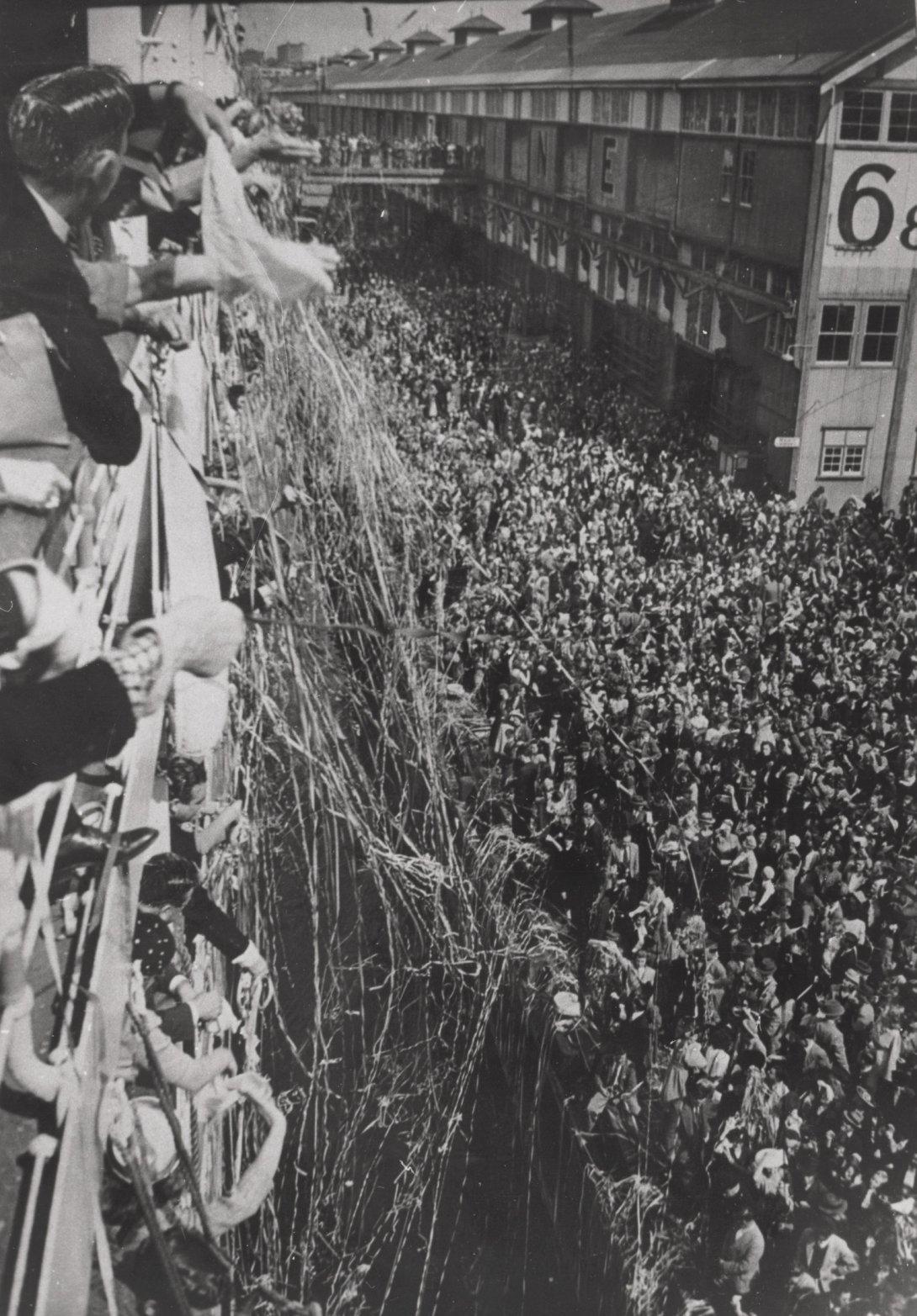
John Larkins, A crowd welcomes a ship, possibly bearing European migrants, arriving at pier, Melbourne, ca. 1950, nla.obj-141717767
John Larkins, A crowd welcomes a ship, possibly bearing European migrants, arriving at pier, Melbourne, ca. 1950, nla.obj-141717767
Convict records
If your ancestor arrived in Australia as a felon, then a good starting point is our convicts research guide. Discover how to access UK trial court records, prison hulk records, convict transportation records or indent records, musters, convict assignment records, tickets of leave, certificates of freedom along with conditional or absolute pardons.
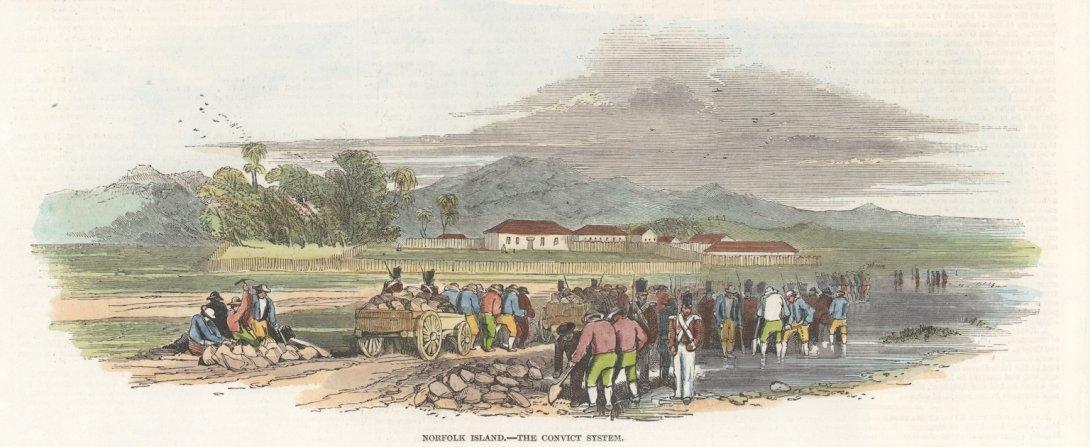
Norfolk Island, the convict system, 1847, nla.obj-135896624
Norfolk Island, the convict system, 1847, nla.obj-135896624
Start your family research journey
We hope these family history tree charts and individual research form can help you solve those missing pieces of your family history puzzle. For more information about our family history resources view our Family history research guide or if you have hit that research brick wall, contact out Ask a Librarian service.
Happy researching!
Visit us
Find our opening times, get directions, join a tour, or dine and shop with us.

